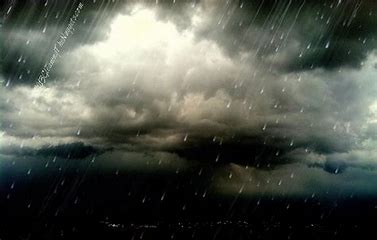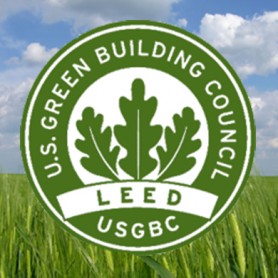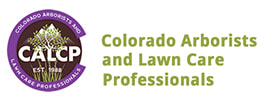|
Persistent upper level troughs over the Intermountain-West combined with plenty of Gulf moisture Results in cool wet month for the Denver Metro. Precipitation: Precipitation for the month of June at Denver International Airport was 6.10 inches, which is much above the normal of 1.94 inches. This makes June 2023, the wettest June in Denver Weather History and the 6th wettest month of all time since records have been taken way back in 1872. There were 15 days with measurable precipitation during the month. The 1.85 inches of precipitation that fell on the 21st is the greatest daily amount for the month. This amount shattered the precipitation record for the date which previously was 0.85 inches way back in 1947. No snow fell during the month. Ten Wettest June`s in Denver Weather History Since 1872: 6.10 inches 2023 4.96 inches 1882 4.86 inches 2009 4.69 inches 1967 4.14 inches 1965 3.99 inches 2005 3.95 inches 2003...1949 3.83 inches 1970 3.59 inches 1963 Temperatures: The average temperature at Denver International Airport for the month was 64.2 degrees F, which is 4.0 degrees below normal. The warmest June on record occurred in 2012 with an average monthly temperature of 75.0 degrees f. The coldest June on record was 60.6 degrees back in 1967. There was only 1 day during the month in which the temperature reached or exceeded the 90 degree mark. This is the fewest 90 degree days for June since 2009 when no 90 degree days were recorded.
0 Comments
Unique, smart and sustainable plants inspired by the Rocky Mountain region from CSU - Plant Select Last spring the JLS team spent an afternoon at Scythe Robotics in Longmont, Colorado learning about the most advanced commercial robotic mowers currently being field-tested in North America. These units have state of the art computer vision technology–to detect obstacles, identify them, and take the proper action–all on its own. By utilizing this advanced artificial intelligence, the mower will stop for a person or an animal but will go around a tree or a pole. No belts, no pulleys, no oil, no filters, no hydraulics with a 52” wide cutting width. Packing a third of the battery capacity of a Tesla, this unit typically mows for more than 8 hours a day before charging overnight. By utilizing this technology, JLS can reduce emission output and fuel usage. Scythe currently has the fifth-generation prototypes working in Florida and Texas, with plans to start mass production in late 2023. JLS has reserved ten of these units and is hoping to have them working with our teams by spring of 2024.
Check them out for yourself. https://www.scytherobotics.com On such a beautiful sunny Colorado day it is hard to believe that snow is on its way. The high today is expected to be 72 degrees but today in 2009 we saw a storm that left some areas with up to 15 inches of snow! Our team will be monitoring this storm system for both our mountain and Denver Metro sites and respond accordingly.
Source: www.weather.gov/bou/wxhistory The official first day of spring is just 5 days away!
BUT........... BEWARE THE IDES OF MARCH! :-) Springtime in the Rockies is usually a somewhat exasperating roller-coaster ride of nice days with warmer temps and colder days that bring heavy snows. This week is exactly that, with today being near 70 degrees, and snow predicted for St. Patrick's Day! It's a good time to be assessing and thinking about the care of your landscaping, as these swings in weather can be a challenging time of transition for shrubs and trees. The moisture is great for our dry climate, but the weight of spring snow can be damaging for many of our plants. Here are some tips to help you navigate the season: Deciduous trees: After a storm, try to gently shake snow from the tree. Use a long-handled broom or rake to get as high as possible. Be sure to work from the bottom of the tree upward, so that when snow falls from the higher branches it does not add more weight to already snow-laden lower ones. Broken or cracked branches should be pruned - it may be best to call for a professional to help with this, as many trees require specific techniques for the continued health of the tree. Right now, the trees haven't leafed out, but when they do, remember that they will then hold even more snow. If there is a hard freeze after trees bud (leaf or flower), remember that it will likely kill those buds. Leaves will come back from a secondary bud, but flowers will not. If it is a fruit-bearing tree, this also generally means fruit loss. Shrubs: Many herbaceous shrubs have weak wood and long, pliable branches that make them susceptible to wind and snow damage. Any branch that has been broken by the weather should be pruned back. Those rips and breaks are an open invitation to pests and disease of all kinds. Ornamental grasses: Many people prefer to leave dried ornamental grasses standing in the garden for the visual interest they provide. Heavy snows will crush them so pruning before or right after is best, as they won't bounce back to their upright shape once damaged. Removing the old growth before new shoots emerge is a best practice, so this is a perfect time to do it. A little effort now will allow your trees and shrubs to thrive through the warm summer months ahead! Here at JLS, we move alot of snow every winter season. BUT.... what we do seems a little mundane compared to this BIG BOY! Check out the videos below of the new rotary plow, named Unit 30, that is part of the $100-million renovation of the cog railway that travels from Manitou Springs to the summit of Pikes Peak. The new snowblower has the capability of cutting through snow drifts up to 10-feet tall and 20-feet wide. It was produced by Zaugg in Eggiwil, Switzerland. The blower's 47.2-inch diameter cutting reels can cut through 4,200 tons of snow per hour and has the ability to blow snow 50 to 100 feet off the line. youtu.be/6Y-VzKe60Qg youtu.be/QmMbgojj2Js Landscape and snow removal companies see this as a giant toy that would be way-fun to drive. One can dream, yes? WINTER IS COMING! Are you ready? Did you know that the earliest recorded (since the late 1800s) snowfall in Denver was on September 3, 1961? It was a whopping 4.2 inches!
And since 2000, the first measurable snowfall was on September 8, 2020….just 3 days after a record high (for the date) temperature of 101 degrees! There was a dusting on the high peaks and ski resorts just last week, but the average first snow for the Denver area is October 18. So likely, we have a bit of time before breaking out the shovels. But you just never know....... JLS will be working hard over the coming weeks to be ready! Contracts are starting to arrive signed, and on-site prep work will be starting for our customers/property managers. Trucks and plows will be getting tuned up, and pre-season training for the teams will be the focus. ARE YOU READY? Rainfall in Colorado varies across the state and fluctuates by year. During dry periods, irrigation may be needed to preserve landscape quality. Over- or under-irrigating a landscape can possibly increase disease incidence, waste water, and decrease overall landscape condition. Irrigation system efficiency is dependent upon several factors including design, installation, and specific site conditions. Traditional irrigation controllers run on a preset programmed schedule, set to water daily, weekly, etc., regardless of the current weather.
Water applied to a landscape can account for a significant portion of a property’s water use. A substantial amount of water is lost to evaporation, wind, and runoff due to improper watering methods. Reducing or eliminating this loss decreases water bills and creates a more water efficient, healthy landscape. Outdoor water savings can be achieved using smart irrigation technologies. Smart irrigation controllers and sensors have been developed to reduce outdoor water use by irrigating based on individual plant and turf water needs. Smart irrigation technology uses weather data or soil moisture data to determine the irrigation needs of the landscape. This technology exists as a complete controller or as a sensor that can be added to an existing irrigation timer to create a smart controller. Smart irrigation technology includes: Smart Controllers:
Add-on Sensors:
These products maximize irrigation efficiency by reducing water waste, while maintaining plant health and quality. Incorporating smart irrigation technology in the landscape can potentially reduce outdoor water consumption. This technology is appropriate for small, residential landscapes as well as large, managed landscapes. Irrigation managers and homeowners should be aware that smart irrigation technology will need to be periodically adjusted and maintained for maximum water savings. Many new smart controllers can be managed from a smart phone or managed by the company that has developed the unit by way of a subscription plan. WaterSense, a voluntary partnership program sponsored by the U.S. Environmental Protection Agency (EPA), is both a label for water-efficient products and a resource for helping you save water. Learn more HERE. Part of what we do is try to give back just a bit! We feel very fortunate for the gifts and blessings in our lives and know that others often have struggles we can't always relate to.
We've been contributing time/energy to Mt. St. Vincent on their annual work day for over 20 years. Here are a few pictures from last week's event - JLS took on removing old rose gardens and getting them replaced with sod. Other local companies took part by also helping tackle a list of improvements throughout the campus. We're proud that JLS and our industry is taking the time to make a difference! Spring has finally arrived and seems to be sticking around! Everyone is ready to plant! One of the most frequent questions we are asked is "what can I plant that is deer and rabbit resistant?"
As we know, wild animals are just that - wild! There are no guarantees as to what they might like to sample on a given day. Often, they pluck a plant from the ground or planter, just to decide it tastes terrible, and then spit it out. But- with some determination, vigilance, a bit of trial and error, and ALOT of patience - you CAN create a lovely landscape. Here is a list of plants (all perennials) that are most likely to provide success: Yarrow Ajuga Snow Drop Anemone Kinnikinnick Sea Pink Silver Mound Sage Japanese Painted Fern Basket of Gold Shasta Daisy Clematis Lily-of-the-Valley Moonbeam Coreopsis Black Eyed Susan Salvia Soapwort Sedum Thyme Periwinkle - Vinca Hummingbird Flower (Zauschneria) Delphinium Bleeding Heart Foxglove Coneflower Cushion English Ivy Daylily Hosta Iris English Lavender Blue Flax Lupine Creeping Oregon Grape Holly Peony Iceland Poppy Engleman Ivy (Virginia Creeper) Penstemon Creeping Phlox Jacob’s Ladder Mexican Hat As a reminder - some of these are toxic - wild animals leave them alone for that reason. Your domestic pets may not have the same wisdom, so please do your research to keep them safe if they like to eat vegetation. |
JLS Landscape & Sprinkler, Inc.JLS has been maintaining quality landscapes for corporate and commercial clients in Colorado for over 40 years. Archives
September 2023
Categories |
|
|
Quick Links |
Get in touch
|
© 2020 JLS Landscape & Sprinkler, Inc. - Privacy Policy






 RSS Feed
RSS Feed










